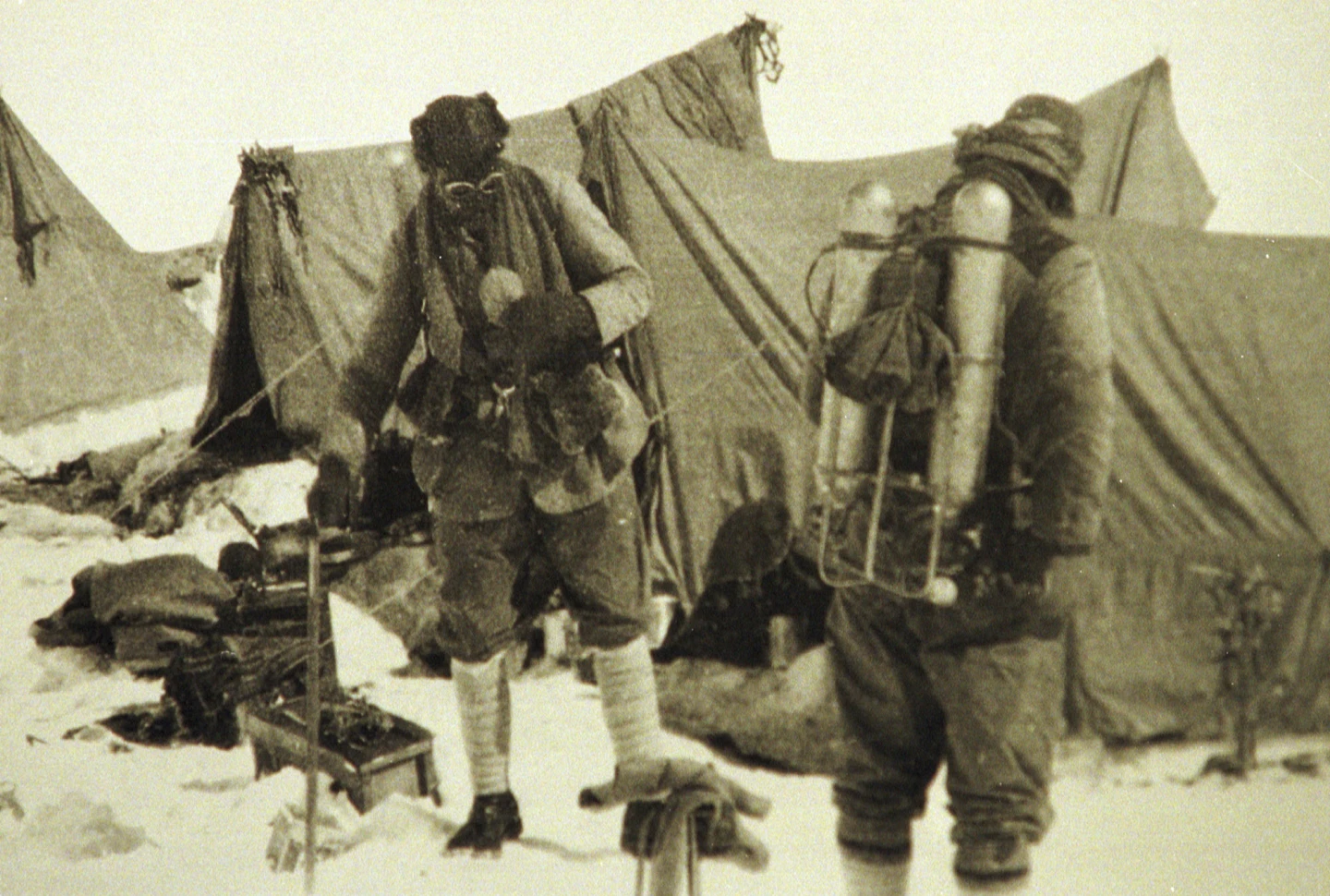In his final letter to his wife before he vanished on Mount Everest a century ago, George Mallory tried to ease her worries even as he said his chances of reaching the world’s highest peak were “50 to 1 against us.”
The letter, digitized for the first time and published online Monday by his Cambridge University alma mater, expressed a mix of optimism, exhaustion and the difficulties his expedition encountered on their quest to be the first party to conquer the peak.
“Darling I wish you the best I can — that your anxiety will be at an end before you get this — with the best news,” he wrote to Ruth Mallory on May 27, 1924 from Camp I. “It is 50 to 1 against us but we’ll have a whack yet & do ourselves proud.”
It remains a mystery whether Mallory, who once famously said he wanted to conquer Everest “because it’s there,” and climbing partner Andrew Irvine reached the summit and died on the way down or never made it that far. Mallory’s body was found 75 years later far below the peak, but Irvine’s has never been located.
The first documented ascent came nearly three decades later when New Zealander Edmund Hillary and Nepalese Sherpa Tenzing Norgay scaled the mountain on May 29, 1953.
Magdalene College posted the letters online to mark the centenary of Mallory’s ill-fated attempt to stand atop the world. The collection, which had previously been available to researchers, also includes letters he wrote from the battlefront in World War I and correspondence he received from others, including his wife.
The only surviving letter his wife wrote from England during the expedition was sent as his party sailed toward Bombay. It recounts a recent snowstorm, how her bank account was overdrawn and how she fell off a ladder before telling him how much she missed him.
“I know I have rather often been cross and not nice and I am very sorry but the bottom reason has nearly always been because I was unhappy at getting so little of you,” Ruth Mallory wrote on March 3, 1924. “I know it is pretty stupid to spoil the times I do have you for those when I don’t.”
In his final six-page correspondence to his wife, addressed to “My dearest Ruth,” George Mallory speaks of trials and triumphs as the party slowly made its way up the mountain, setting up higher camps and then retreating to lower elevation to recover.
“This has been a bad time altogether,” Mallory wrote 12 days before he was last seen alive. “I look back on tremendous efforts & exhaustion & dismal looking out of a tent door and onto a world of snow & vanishing hopes — & yet, & yet, & yet there have been a good many things to set on the other side.”
Mallory said he had a nagging cough “fit to tear one’s guts” that left him sleepless and made climbing difficult. He described a near-death plunge into a crevasse when he failed to detect it beneath a blanket of snow.
“In I went with the snow tumbling all around me, down luckily only about 10 feet before I fetched up half-blind & breathless to find myself most precariously supported only by my ice ax somehow caught across the crevasse & still held in my right hand,” he said. “Below was a very unpleasant black hole.”
Mallory said only one member of the party remained “plum fit” and they planned to rest up for two days before pushing for the summit, which was expected to take six days.
Mallory and Irvine were last seen alive June 8, 1924 when they were said to be still going strong some 900 feet (274 meters) beneath the 29,035 feet (8,850 meters) summit. Mallory’s body was found at 26,700 feet (8,138 meters).
A group of mountaineers who tried in 2007 to reconstruct Mallory’s ascent were unable to determine if the pair made it to the top.
“I still believe the possibility is there they made it to the top, but it is very unlikely,” said Conrad Anker, who participated in a documentary recreating the climb and who had discovered Mallory’s body in 1999.
In Mallory’s final letter to his wife, he says, “the candle is burning out & I must stop.” He signs off: “Great love to you. Ever your loving, George.”

